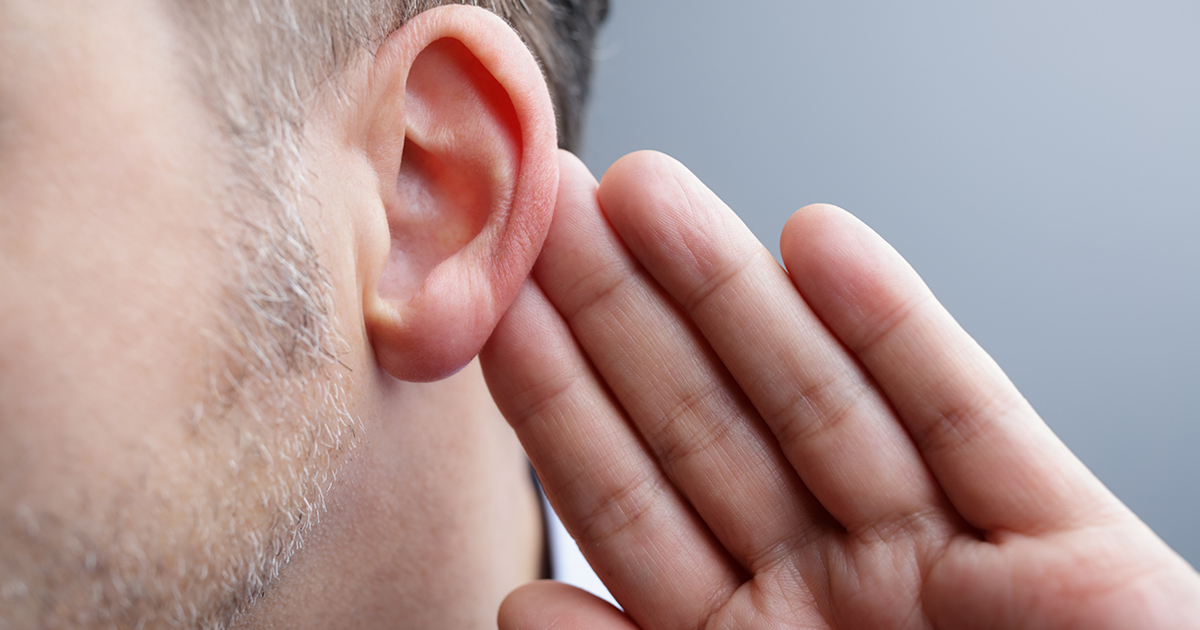Common Symptoms Of Pulsatile Tinnitus
Pulsatile tinnitus is a rare type of tinnitus. Tinnitus, ringing in the ears, can occur with a wide range of hearing conditions and ear injuries. With pulsatile tinnitus, though, patients will experience a whooshing or thumping sound that appears to move to a steady drumbeat. Pulsatile tinnitus is related to regular tinnitus in that it involves the perception of a sound that other individuals do not hear. However, unlike normal tinnitus, patients are hearing sounds from inside their own body. Doctors can sometimes hear the sounds if they use a stethoscope to listen. Other names for the condition include pulse-synchronous, vascular, or rhythmic tinnitus. Most cases of pulsatile tinnitus are caused by a specific health issue like irregular blood vessels.
Thankfully, there are many options for pulsatile tinnitus treatment. There is no dedicated pulsatile tinnitus medication, though patients have been successful with high blood pressure medication where it applies. Natural remedies for pulsatile tinnitus often include white noise machines and stress management. Wearable sound devices and tinnitus retraining are also quite effective. Of course, patients must first understand the symptoms to achieve the best treatments for pulsatile tinnitus.
Hear Steady Pulse-Like Beat

The most characteristic symptom of pulsatile tinnitus is regularly hearing a steady beat. This beat tends to sync up with an individual's heart rate. When their heart rate increases, the sound will become faster; when it decreases, the sound will gradually slow down. Some patients only hear the sound in one ear, while others hear it in both. It is common for individuals to hear their heartbeats if their heart is pounding hard. However, individuals hearing their heartbeat loudly, even in situations where they have not exerted themselves, is unusual. Many individuals with pulsatile tinnitus find the sound to be distracting and loud. Some even say that it is unbearable.
Read more about the common symptoms of pulsatile tinnitus now.
Hearing Loss

When pulsatile tinnitus is related to irregular blood vessels alone, the drumlike sound tends to be the only symptom. However, the condition can also be related to high pressure in the spinal fluid surrounding the brain. Other symptoms may present when this is the case, with hearing loss being one of them. Patients may not be able to hear well around the sound of the pulsing. Their hearing may come and go in seemingly random spurts. It may be difficult for them to hear certain high or low-pitched sounds.
Affected individuals might need to turn their television up louder or ask others to repeat themselves several times before they understand them. If individuals are experiencing unexplained hearing loss, they should see a doctor to rule out things like intracranial hypertension. Even in cases of permanent and irreversible hearing loss, an audiologist can often use things like hearing aids to help.
Get more details on the warning signs of pulsatile tinnitus now.
Dizziness

Dizziness is another symptom that may occur if there is too much pressure around an individual's brain. The dizziness may be related to the fluid in the inner ear. Typically, an individual's inner ear is the part of their body that helps them balance and orient themselves in the world. Episodes of dizziness can present with different specific symptoms, one of which is vertigo.
Vertigo makes affected individuals feel like the world is moving even when their body is still. It is responsible for individuals feeling like the room is spinning, or like they will fall off the edge of high places. Disequilibrium occurs when individuals have trouble walking steadily and feel as though they are weaving or going to fall. It is also common for any or all of these symptoms to be accompanied by feelings of anxiety or panic.
Discover additional symptoms of pulsatile tinnitus now.
Vision Issues

Vision issues may occur as a side effect of intracranial hypertension and are often linked to pulsatile tinnitus. Individuals have reported several different problems. Some may not notice that they have vision problems until another person points them out. A doctor will typically do a neurological exam to determine the existence of visual loss.
Hypertension can lead the lateral rectus muscles to become weakened. These muscles turn the eyes outward. If they are too weak to keep their eyes aligned, patients may experience double vision as their eyes turn inward. Affected individuals may also have reduced peripheral vision. A doctor will perform a dilated eye exam to see if patients have signs of papilledema. Papilledema occurs when pressure increases around or inside the brain, which leads to a swelling of the optic nerve.
Keep reading to learn more about pulsatile tinnitus symptoms now.
Headaches

Headaches typically accompany pulsatile tinnitus if there is intracranial hypertension. These headaches can range from mild to severe, and they may involve different types or locations of pain. Sudden and extreme pain is an indicator emergency medical attention is required. If patients do not get emergency medical treatment, they may permanently damage their brain and spinal cord.
The complications from this damage and pressure can be fatal. If individuals have a headache due to intracranial pressure, they may also have neurological symptoms. These symptoms include behavioral changes, fatigue, muscle weakness, problems talking, vomiting, and blurry vision. Many of the symptoms are similar to those of a stroke.
Get more details on the various warning signs of pulsatile tinnitus now.
Lightheadedness

Lightheadedness can make patients feel like they are going to faint. Many individuals say that when they are lightheaded, their body feels quite heavy, though their head does not seem to be getting enough blood. The feeling of lack of blood is often why some individuals feel as if they are about to faint.
Some patients dealing with lightheadedness, including when it is due to pulsatile tinnitus, also experience a temporary loss of vision. In many instances, this temporary loss of vision is when their vision darkens for a few seconds or a minute before coming back. When individuals experience lightheadedness due to pulsatile tinnitus, they should sit down immediately. This will help them avoid falling and hurting themselves.
Discover additional indicators of pulsatile tinnitus now.
Heart Palpitations

Pulsatile tinnitus is often the result of an underlying condition that affects the heart. Many experts say that this is why one of the common symptoms of this form of tinnitus is heart palpitations. Palpitations make the heart feel as if it is beating too fast, fluttering, skipping beats, or pounding. This symptom can be quite worrisome for many patients. In quite a few cases, it is harmless. However, when heart palpitations are a symptom of pulsatile tinnitus, patients must contact their doctor as soon as possible. This is because it often points to an underlying heart condition that must be addressed.
Learn more about the symptoms associated with pulsatile tinnitus now.
Chest Pain

Chest pain is not a common symptom linked to pulsatile tinnitus. Thus, the vast majority of patients do not experience it. When individuals dealing with pulsatile tinnitus do have chest pain, it is usually pointing to the underlying condition, particularly when that condition escalates. Many conditions that cause pulsatile tinnitus, such as atherosclerosis and high blood pressure, increase an individual’s risk of experiencing a heart attack. Of course, most individuals know that the iconic warning sign of a heart attack is sudden chest pain. This is why individuals who experience sudden chest pain, including those with pulsatile tinnitus, should call for emergency help right away.
Continue reading to uncover details on more signs of pulsatile tinnitus now.
Anxiety

As mentioned, the most common symptom of pulsatile tinnitus is hearing a steady beat in at least one ear. The sound can be quite distressing for patients, both before they are diagnosed as well as afterward. Thus, in many cases, patients will also display significant anxiety surrounding the sound they hear in their ears. Prior to diagnosis, this anxiety often stems from the knowledge that others do not hear the sound. It is also anxiety-inducing when individuals are unable to make the sound stop. The longer that patients go without treatment, the worse their anxiety will become.
Get more information on the range of symptoms associated with pulsatile tinnitus now.
Able To Take Pulse With The Sound

The beat that patients hear in their ears in pulsatile tinnitus often mimics their heartbeat. Some cases are even a match for the patient’s pulse. Thus, individuals with pulsatile tinnitus may be capable of taking their pulse by listening to the sound in their ears. However, they must also put their fingers on the inner part of their risk or the side of their neck while they listen and look at a clock to time the beats and the sound. Doing this is what can confirm that the noise they hear in their ears is, in fact, the sound of their pulse and heart beating.
